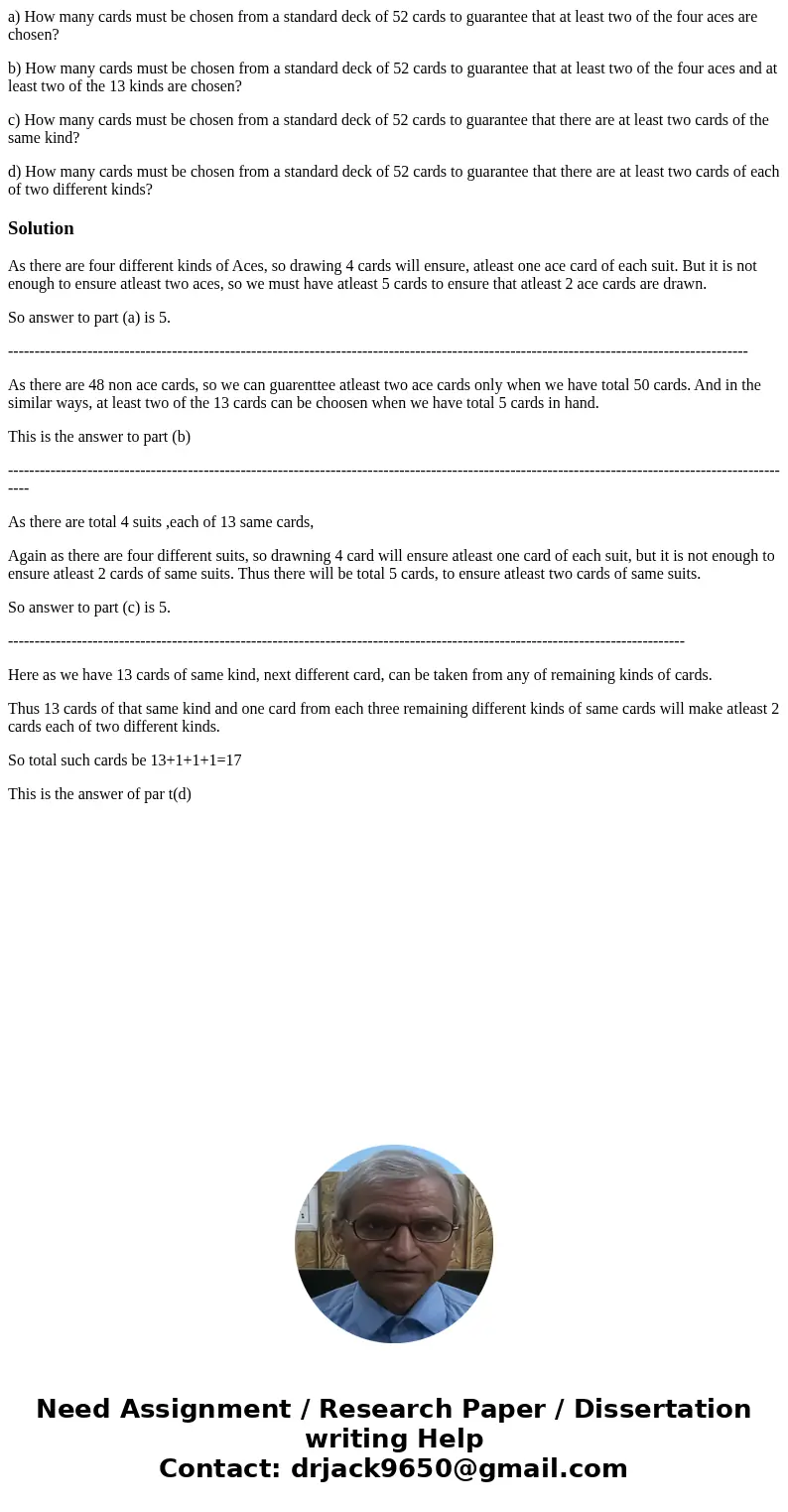a How many cards must be chosen from a standard deck of 52 c
a) How many cards must be chosen from a standard deck of 52 cards to guarantee that at least two of the four aces are chosen?
b) How many cards must be chosen from a standard deck of 52 cards to guarantee that at least two of the four aces and at least two of the 13 kinds are chosen?
c) How many cards must be chosen from a standard deck of 52 cards to guarantee that there are at least two cards of the same kind?
d) How many cards must be chosen from a standard deck of 52 cards to guarantee that there are at least two cards of each of two different kinds?
Solution
As there are four different kinds of Aces, so drawing 4 cards will ensure, atleast one ace card of each suit. But it is not enough to ensure atleast two aces, so we must have atleast 5 cards to ensure that atleast 2 ace cards are drawn.
So answer to part (a) is 5.
--------------------------------------------------------------------------------------------------------------------------------------------
As there are 48 non ace cards, so we can guarenttee atleast two ace cards only when we have total 50 cards. And in the similar ways, at least two of the 13 cards can be choosen when we have total 5 cards in hand.
This is the answer to part (b)
------------------------------------------------------------------------------------------------------------------------------------------------------
As there are total 4 suits ,each of 13 same cards,
Again as there are four different suits, so drawning 4 card will ensure atleast one card of each suit, but it is not enough to ensure atleast 2 cards of same suits. Thus there will be total 5 cards, to ensure atleast two cards of same suits.
So answer to part (c) is 5.
--------------------------------------------------------------------------------------------------------------------------------
Here as we have 13 cards of same kind, next different card, can be taken from any of remaining kinds of cards.
Thus 13 cards of that same kind and one card from each three remaining different kinds of same cards will make atleast 2 cards each of two different kinds.
So total such cards be 13+1+1+1=17
This is the answer of par t(d)

 Homework Sourse
Homework Sourse